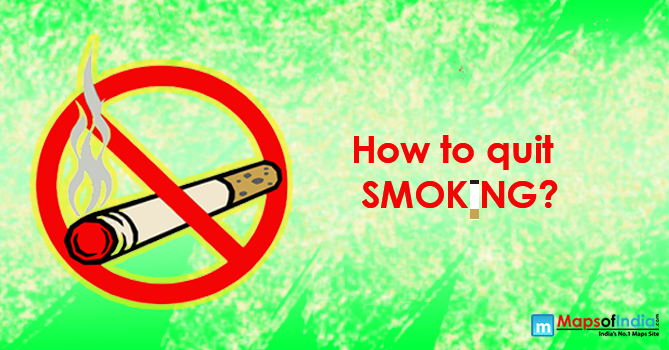
Whether you’re an occasional teen smoker or a lifetime day-to-day smoker, quitting could be challenging but not impossible. Smoking tobacco is both a physical addiction and a psychological habit. The nicotine from cigarettes gives a temporary and addictive high. Removing that regular fix of nicotine makes your body experience physical withdrawal symptoms and cravings.
One will require to address both the addiction and the habits and routines that go beside it to fight off smoking. With the proper support and a property plan, any smoker can kick out the addiction.
Here are some ways to quit smoking:
1) Try nicotine replacement therapy: Visit your doctor and ask him about nicotine replacement therapy. The options consist of:
- Prescription nicotine in a nasal spray or inhaler
- Over-the-counter nicotine patches, gum and lozenges
- Prescription non-nicotine stop-smoking medications such as bupropion (Zyban) and varenicline (Chantix)
Short-acting nicotine replacement therapies such as nicotine gum, lozenges, nasal sprays or inhalers can assist you to tackle intense tobacco craving strikes. These short-acting therapies are generally secured to take in combination with long-acting nicotine patches or non-nicotine medications.
2) Prevent triggers: Urges for tobacco are possibly to be most vital in the situations where you smoked or chewed tobacco most often, such as at parties or bars or while feeling stressed or sipping coffee. Recognise your trigger situations and have an idea in place to prevent them entirely or get through them without using tobacco. Don’t place yourself up for a smoking relapse. If you usually smoked when you talked on the phone, for example, keep a pen and paper nearby to occupy yourself with doodling rather than smoking.
3) Physical exercise: Physical activity can distract you from tobacco cravings and lower their intensity. Even a short burst of physical activity such as running up and down the stairs can rid tobacco craving a few times. Go for a walk or jog. If you’re stuck at home or the office, try squats, deep knee bends, pushups, running in place, or walking up and down a set of stairs. If physical activity doesn’t suit you, try prayer, needlework, woodwork or journaling. One could try chores for distraction like vacuuming or filing paperwork.
4) Practice relaxation: Smoking could be the way to manage stress. Opposing a tobacco craving can itself be stressful. Take the edge off stress by practising relaxation techniques, namely deep-breathing exercises, muscle relaxation, yoga, visualisation, massage or listening to serene music.
5) Online support: Attend an online stop-smoking program or read a quitter’s blog and post motivating thoughts for someone else who might be struggling with tobacco cravings. Learn from how others have managed their tobacco cravings and come up without addiction.
6) Remind yourself of gratification: Pen down or say out loud why you want to cease the smoking process and resist tobacco cravings. These might comprise: feeling better, getting healthier, sparing your loved ones from secondhand smoke, saving money. A practice to beat the urge is always better than doing nothing. And each time you resist a tobacco craving, you’re one step near to being tobacco-free.
Tobacco cravings don’t last long—approximately about 5 or 10 minutes. If you’re tempted to light up, remind yourself that the urge will soon go away, and try to wait it out. It assists in getting ready by adopting the above strategies to cope with cravings. Remind yourself why you quit and reward yourself for gradually moving to phase out this habit. Moreover, nurture yourself, learn different ways to soothe yourself quickly, listen to a piece of refreshing music, play with a pet, or sip a cup of hot tea, eat healthy, varied meals, eat plenty of fruit, vegetables, and healthy fats, avoid sugary food, sodas, fried, and convenience food, learn to eat mindfully, and importantly, drink lots of water.




